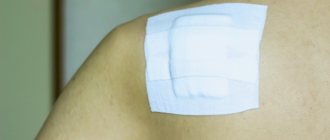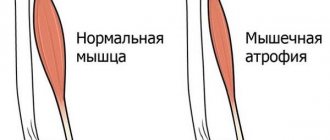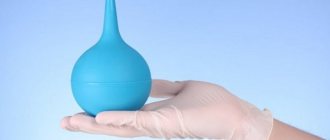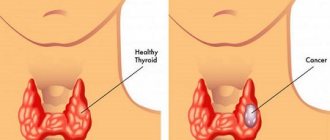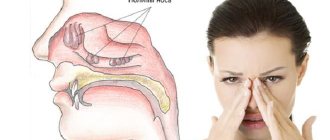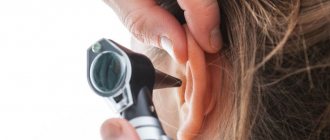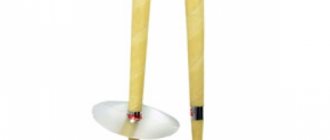Most often, the patient turns to an otolaryngologist, not knowing how to remove the wax plug from the ear himself. Every person faces such problems at least once in their life, although cleaning their ears from accumulated wax is a common practice for millions of people. And yet, in many cases, it accumulates in excessive quantities, worsening hearing and well-being. You can remove wax plugs in different ways, including painless medications.
The main causes of wax plugs
The reasons are organic and inorganic.
Organic include:
- Features of the structure of the ear canal;
- Intensive work of secretory glands;
- Inflammatory processes in the ear area.
Inorganic ones include:
- Cleaning the ear canal with cotton swabs;
- At risk are people who work in dusty conditions (miners, painters, builders);
- Also people who stay in a room with dry air for a long time.
Procedure at home
You are allowed to rinse your ears yourself only after a thorough diagnosis. The doctor must verify the integrity of the eardrum and purulent discharge.
To carry out this procedure, warm water or saline solution is drawn into a syringe, and then injected into the ear in small portions. To eliminate the risk of perforation, this should be done along the back wall.
This procedure has quite a lot of useful properties. By doing it you can get the following effects:
How can I tell if I have wax?
Unfortunately, a person cannot immediately recognize a sulfur plug.
Because sulfur accumulates gradually over a period of time. And until it completely blocks the ear canal, it is almost impossible to diagnose the plug yourself.
The only thing that can help with this is water. When it gets into the ear, the wax swells and blocks the ability to hear.
This is why many people have difficulty hearing after a shower, bath, or swimming pool. Sometimes the presence of earwax can be accompanied by tinnitus, headache, nausea, and you can hear your voice.
By the way, the presence of a plug for a long time can lead to inflammation of the middle ear.
So, how to clean your ears correctly and safely.
Symptoms of wax plug formation
It is not always possible to immediately understand that an ear plug has formed in the ear canal. It is not always possible to see it without special equipment.
If the ear canal is not closed, then there will be no special symptoms. There are characteristic signs that require attention, but they appear gradually:
- Your ears feel full, as if you are flying on an airplane. You can also hear noise and echo your own voice.
- Periodic dizziness may be present due to the fact that the wax plug touches the nerve endings of the eardrum. Nausea may also occur. If the plug is adjacent to the eardrum, it can cause otitis media and other inflammatory diseases.
- If the plug comes into contact with the eardrum for a long time, coughing and tingling in the heart may occur. This is due to stimulation of the nerve endings in the ear.
- Hearing decreases and may disappear completely if dense wax completely closes the auditory canal.
- Upon examination, if the ear is pulled back a little, pieces of dried wax will be visible. Taking into account individual characteristics (age, chronic diseases, inflammatory processes), you can determine how to remove the ear plug.
How to remove a plug from your ear yourself?
When removing wax plugs yourself, you must follow the established algorithm of actions:
- In order to remove the sulfur plug, we must soften the sulfur lump.
- We take a pipette, a cotton swab and a softening agent, for example, glycerin.
- You need to sit the patient on a chair, tilt your head,
- take five drops of the product heated in your hands, drip it into the ear, from above.
- The edges of the auricle need to be pulled down with the other hand.
- Next, you need to put a tampon into the passage.
- The second step is to rinse the wax plugs in your ears.
- Here we need a syringe and three percent hydrogen peroxide.
- This step should be done the next morning.
- It is advisable to rinse while lying on your side so that your ear is at the top.
- The ear canal is filled with the product until it begins to overflow.
- At this stage, everything, washing is completed.
- But you need to remain in this position for another 15–20 minutes.
- The final stage comes down to the immediate removal of sulfur accumulation.
- Here you need a stream of warm water under pressure; you can use a shower hose, without a nozzle for spraying water.
- You need to start washing from a certain distance, gradually moving closer to the ear.
It is possible that you will not be able to remove wax plugs in your ears the first time.
It is worth carrying out this procedure three to four times. If it doesn’t help, then we go to the doctor.
This method is quite popular among our people. But this is not a panacea.
And a reasonable question arises: what else can you use to get rid of earwax plugs on your own?
Let's look at a few more ways to cleanse your ear of wax:
- Famous almond oil . For the procedure, you will need seven drops of oil, naturally heated, dripped into the ear in the evening, plugged with a cotton swab. Rinse in the morning.
- Juice of baked onions . In folk medicine, very often used. For treatment you will need about four drops. After treatment, it is necessary to place a tampon in the ear, soaked in Vaseline or Vaseline oil.
- Water and salt. You can prepare a solution for rinsing the ears from wax plugs, consisting of water and salt. In 50 grams of water, room temperature, dilute 1 teaspoon of salt. And douche with this solution 3 times a day.
- Washing with milk. Heat the milk until it is tolerably hot, mix it with hemp oil and add a few drops at a time, and put it in with a tampon. Instill in the morning and evening. The course of treatment is 3 – 5 days.
It is not possible to remove sulfur with a dense consistency at home. It can be removed by a specialist. In this case, do not self-medicate! Take care of your precious health and hearing!
Cleaning your ears at home
To avoid complications and adverse consequences, the procedure must be performed correctly, without deviating from the general rules. Doctors do not recommend washing yourself; firstly, it is inconvenient, and secondly, it can be disrupted. Ideally, the manipulation is carried out by a qualified specialist. If the patient decides to do the flushing at home, be sure to ask a family member for help, since doing it yourself is not so easy. Let's consider the basic rules and order of execution of how to rinse the ear:
- First, prepare a cleaning liquid, such as water. Please note that it is necessary to bring to a boil, cool to human body temperature and pour the water into a sterile container.
- Prepare the instrument to perform the procedure. Most often, a regular syringe of maximum size is used. The syringe must be sterile and not previously used. The needle must be removed.
- If the rinsing is carried out to soften the wax plug, before pouring the liquid into the ear, close both ear canals with a cotton swab. A slight lack of oxygen will increase the effectiveness of the manipulation.
- The patient should tilt his head slightly to the side, lifting the disturbing ear upward.
- Carefully insert the tip of the syringe closer to the ear canal and gradually pour in the liquid. Please note that you need to add water within 3-5 minutes. Careless and sudden entry of liquid into the ear may become ineffective.
- For several minutes a person should stand in one place without changing his posture. After 5-10 minutes, tilt your head in the opposite direction and let the water drain.
- We close both ear canals with cotton wool.
Can hydrogen peroxide be used?
What to do if you decide to use it to remove wax plug yourself.
Hydrogen peroxide may well help cure earwax. The main thing is to be careful when working with it.
You need to tilt your head so that the problem ear is horizontal to the floor. And drop a couple of drops of peroxide into it. And hold your head in this position for about 10 minutes.
When peroxide gets into the ear, it will begin to foam; there is no need to be alarmed, this is a normal chemical reaction. This procedure can be carried out for about five to seven days.
You can’t drip too much, otherwise there is a risk of drying out the ear opening. And besides, sulfur is a natural barrier to dust, viruses and bacteria entering the ears.
Despite the fact that hydrogen peroxide in the ear for earwax is a quite effective method in the treatment of earwax, it still requires care, accuracy and caution when performed. Be careful!
Ear plugs in children and adults, photo
This is what our ear looks like in cross section.
The ear canal is divided into 2 parts :
- Membranous-cartilaginous part located close to the surface
- Bone part , near the eardrum
Between these two parts there is a narrow passage, the most vulnerable place of the ear canal, where sulfur accumulates. The auditory canal is covered with skin and is protected by several glands:
- Sebaceous , with the help of which sebum is produced
- Sulfuric acid , thanks to which sulfur is produced - a milky liquid
- Sweat , responsible for the work of sweat areas
What is sulfur made of?
Sulfur is formed only in the membranous part .
The composition of earwax is rich in different components. Sulfur consists of components:
- Belkov
- Enzymes
- Zhirov
- Immunoglobulin
- Epithelium
- Cholesterol
- Keratin
- Hyaluronic acid
This is interesting . In men and women, sulfur has different chemical composition: in women it is more acidic. Also, sulfur has different composition on different continents of our Earth: Asians have dry sulfur and have more proteins, Africans have more fats.
Why is sulfur formed?
This is what a wax plug in the ear looks like.
Wax is formed in all people . It lubricates the ear canals and protects them from dust, dirt, insects and infections entering the ear.
Read also Hoarseness (hoarseness of voice) - causes, diagnosis, treatment
All these foreign bodies, entering the ear, settle on the wax, it thickens and comes out on its own after we talk or chew. And only in some people it cannot come out on its own and accumulates inside the ear canal, creating a plug there.
Each of the components that make up sulfur has its own purpose:
- Fats prevent the skin of the ear from getting wet if water gets into the ear.
- The acidic environment prevents bacteria and fungi from multiplying
This is interesting . Each of us produces 15-20 mg of sulfur per month.
Classification
The color of wax plug can vary from yellow to brown. During the examination, the doctor determines the consistency of the sulfur plug. This is necessary to determine which method to remove the conglomerate - wash or use the dry method. The main criterion for distinguishing types of sulfur plugs is their consistency. The denser the conglomerate, the more difficult it is to extract.
According to this criterion, the following sulfur plugs are distinguished:
- Pasty. They belong to the soft category. They have a color from dark yellow to light yellow. The consistency is soft, moderately fluid, reminiscent of fresh honey.
- Epidermal. The etiology of this type of traffic jam remains unclear. The composition of the conglomerate includes particles of the upper layer of skin (epidermis) and sulfur. The color of the cork is gray, the density is first loose and then rocky. Education often leads to otitis media. According to scientists, such a plug occurs in people with congenital syphilis or with deformities of nails and teeth.
- Plasticine-like. They are also a type of soft plugs. The color of the conglomerate is brown. In terms of viscosity, it resembles pliable plasticine.
- Solid. Their composition includes virtually no water, and the color can vary from dark brown to black.
Cleaning ears from wax plugs by blowing
Ear blowing as a method of treating wax plugs really has its place.
But! This procedure is quite dangerous, as self-medication.
If you decide to undergo this procedure, but experience pain, or the plug remains in place, then go to an otolaryngologist as soon as possible.
The procedure itself involves introducing air into the tympanic cavity of the ear.
Blowing is usually used to determine patency and treat diseases of the auditory tube.
At home, blowing can be done in this way:
- the patient covers his mouth and nose,
- and the person who took on the role of “doctor” exhales forcefully,
- which, in turn, has nowhere to go, and it enters the Eustachian tube, and from there, under pressure, into the tympanic cavity of the ear.
This method is the most acceptable. There are several other methods, but they are not practical at home.
Only specialists within the medical institution can perform these manipulations.
Despite the many methods and ways to get rid of traffic jams at home, this mission is best left to a specialist! To avoid unwanted consequences and problems in the future!
How to rinse your ear with solution recipes
The procedure for washing the auditory cavity is carried out not only using clean water. In order to wash the ear of wax plugs, other compositions are also used. Their purpose is the same, but they have significant differences in the principle of operation. The recipes for preparing the compositions are simple. You can prepare the cleanser yourself by following the following instructions.
Furacilin
To prepare the solution you will need hot, purified water (temperature - 50 degrees). To prepare 1 liter of solution, use 4 Furacilin tablets. The medicine should be thoroughly ground into powder, since it dissolves quite poorly in water. Pour the resulting solution into water and mix thoroughly. The resulting lemon-colored water should be left in a warm place for 2 hours. If after this time there are granules of the drug at the bottom of the container, the mixture should be filtered through several layers of gauze. It is unacceptable for such particles to enter the cavity; they can damage the epithelial layer. If the composition is intended to be used for a cleansing procedure for a child, the concentration of Furacilin is reduced by 2 times.
Immediately before carrying out the manipulation, the required volume of the composition must be heated to 37 degrees. The finished product should be stored in a cool place. Shelf life – 2 days.
The product has the ability to destroy pathogenic microorganisms, therefore it belongs to the list of ways to combat purulent inflammation of the outer and middle ear in children.
Sea water
Sea water is the same saline solution or saline solution. The product can be purchased at a pharmacy at an affordable price or prepared independently, observing the recommended proportions. For preparation, you need table or sea salt and purified, preferably distilled water.
To prepare 250 ml of solution you will need 1 teaspoon of salt. If the product will be used to wash a child’s ear, the amount of salt is reduced to ½ teaspoon. If sea salt is used to prepare the solution, it is necessary to strain the composition through a fine sieve; coarse, insoluble granules may be present in the water. During one procedure, up to 50 ml of liquid can be injected into the auditory cavity
It is important to ensure its complete elimination after completion of the manipulation.
Hydrogen peroxide
The most common and safe means of rinsing is peroxide. The composition is also highly effective. The product softens sulfur and simplifies the process of removing it from the lumen. To carry out the procedure at home, the composition is mixed with water in a ratio of 1:3 (provided that 3% peroxide is used as the starting material). Before use, the composition is heated to 37 degrees, which helps prevent hypothermia. It is acceptable to introduce 20 ml of the composition in 1 rinsing procedure; excessive persistence will not speed up the process of removing the plug. To ensure safety, the procedure should be repeated no more than 3 times a week. After removing the accumulations of sulfur, the manipulation is stopped.
Preparations for rinsing
There are medications to treat this disease at home. Their action is aimed at dissolving earwax.
The main drugs that can be found in pharmacies are:
- A-Cerumen (French remedy). It is necessary to drip 1 ml into the external auditory canal. After a minute it clears out. The procedure must be carried out 2 times a day, the course of treatment is 4 days.
- Remo-Wax. Place 15 drops into the sore ear, wait about one hour, after which the plug can be removed. After use, the ear canal should be rinsed with water. Treatment takes about three days.
- Klin – Irs. The new drug is made from a derivative of olive oil and paraffin. 2-3 drops are dropped into the ear, and the wax dissolves within a few hours.
Based on practice, our people wash their ears with these drugs.
Folk remedies
Traditional medicine recipes help to cope with the problem if there are no complications.
When there were no specific drugs and hardware techniques yet, earwax was gotten rid of using the simplest means:
- bulbs - freshly squeezed juice, diluted with water in a 1:1 ratio, instilled into the auricle 4-5 drops three times a day;
- olive or almond oil – 2-3 drops for 5 days gave quick results;
- soda and salt - 1 tsp. baking soda or coarse table salt was dissolved in 0.5 cups of boiled water, and the ear cavity was carefully washed;
- running water - a stream from a shower without a nozzle was directed directly into the ear, the plug flew out on its own;
- heat - place a warm compress on the affected side so that the plug softens and moves towards the “exit”.
We figured out how to get rid of an ear plug. The main thing is not to forget about precautions.
other methods
Other methods of treating ear wax plugs include “Ear candles.” This is an old “grandmother’s” recipe.
Take a white candle and melt it in a water bath. We cut the cotton fabric into strips measuring 2 cm by 25 cm.
Dip the strips into the melted wax until they are completely soaked in wax. Then we quickly wrap it around pencils or thin sticks.
After letting it dry a little, carefully remove them from the pencils and wait for them to dry completely.
Next, you should lie on your side, with your affected ear up, insert the prepared tube into your ear, preferably place a mirror in front of you.
Light the tube, the wax will begin to heat up and rise up, there may be crackling in the ear, this is normal, there is no need to be afraid.
Here, the main thing is to pull out the rag strip in time when the flame comes close to the ear. For this you will need a mirror.
After the procedure, the amount of melted sulfur will be visible on the strip. This procedure can be carried out 2-3 times. This procedure warms up the ear and nose. Calms.
Algorithm for washing the ear
After the process of softening and removing fluid from the ear, the canal must be rinsed to remove any remaining wax. For this, it is best to use regular warm water. It must be drawn into a syringe or bulb and carefully inserted into the ear. There is no need to supply water under strong pressure, as this can harm yourself. But the push of water should be quite confident, because the purpose of the procedure is to wash away the remaining sulfur
It is important to know:
- The ear being manipulated should be tilted down. This is necessary so that the remaining sulfur can come out without hindrance.
- The temperature of the water for washing the ear should be equal to body temperature, i.e. be 37°C.
- The procedure must be carried out over a wide container or sink.
You need to rinse your ears in this way twice in a row. This will help remove as much wax as possible from the ear canal.
How to remove a plug from a child's ear?
Children, just like adults, can suffer from earwax. The reasons are actually the same as for everyone else.
Adjusted for the fact that the child himself does not know or suspect that there may be a traffic jam. It’s the parents’ job to notice this.
Not everyone has a visible plug, so parents can conclude that a plug is present based on symptoms.
How to remove a child's plug?
- Under no circumstances should you try to remove the plug mechanically: with tweezers or a needle. You can damage your ear without achieving any results.
- You can purchase the above-mentioned drugs A-Cerumen Remo-Vax, Klin - Irs. Drops are instilled into the ear with the child lying down, leave the child in this position for a minute, then turn him over onto another tank and allow the drug to flow out along with the stopper.
- Place 1 drop of vegetable oil in the child's ear twice a day for five days. During this period of time the plug will come out on its own. If after this period the plug has not come out, you need to contact a specialist. Neglected wax plugs can lead to more serious problems in the future.
- Using the same scheme, you can use a 3% solution of hydrogen peroxide. But! Carefully. A baby's skin is more delicate than an adult's, and it can be burned with peroxide.
- Garlic compress. To prepare it, half a clove of garlic is ground and mixed with camphor oil. A gauze flagellum is soaked in this mixture and inserted into the ear canal for no more than 10 minutes. Be prepared for the garlic to burn your ear; your child will not like it very much. After time has passed, the flagellum is pulled out and the ear is washed with warm water.
- For dry plugs, it is better to use Levomikol ointment to soften the sulfur plug. For 3 days and then rinse.
Do not risk your baby’s health, seek help or advice from a doctor.
How do ears clean themselves of wax?
The external auditory canal communicates with the internal part of the temporomandibular joint. When a person talks or chews food, sulfur moves outward from the eardrum.
The skin lining the ear canal grows as quickly as human nails. As it grows, it pushes ear secretions outward. Thus, sulfur, which is attached to the eardrum, after 2-3 months will independently appear near the exit from the ear canal.
In addition, the auditory tube is covered with small hairs that are constantly in motion. Their vibrations also push earwax out.
However, the self-cleaning mechanism of earwax can sometimes fail, resulting in the formation of a wax plug.
Precautionary measures
When rinsing your ears yourself at home, you must follow some rules such as:
- It is necessary to use warm water, since the use of cold water can negatively affect the vestibular apparatus, which in turn can lead to nausea, or even vomiting, and dizziness.
- A syringe, enema, syringe does not need to be inserted into the hearing aid itself; it is quite enough to bring it close. Rinse carefully along the upper wall of the ear canal, gradually increasing the pressure.
- After rinsing, the ear must be dried very well and covered with a cotton swab.
- Do not go outside for 30 minutes after washing.
- And most importantly, if any unpleasant sensations or painful effects occur, you should immediately consult a doctor.
The importance of following the rules
The requirements for processing the auditory organ are quite simple, but their implementation is mandatory. This will prevent the possibility of damage and worsening of the condition due to the pushing of a clot of wax into the ear. Here are some important recommendations:
- It is strictly contraindicated to begin removing the plug at home without a preliminary examination and recommendations for the procedure from a qualified specialist.
- The presence of any manifestations of an inflammatory nature (fever, chills, signs of dyspepsia) is also a contraindication to rinsing the ears to remove the plug.
- It is strictly forbidden to use pins, matches, sticks and similar dangerous hard objects to get rid of earwax.
Tools
What tools do we need:
- a large syringe (at least 20 ml) or a rubber medical bulb with a soft plastic tip;
- pipette;
- sterile cotton wool;
- rinsing solution or drops to soften sulfur;
- warm boiled water;
- soft towel or napkin;
- small container - tray or bowl.
Prevention of ear plugs
As you know, any disease is easier to prevent than to treat later. This expression can be applied to ear wax plugs. It’s easier to prevent plugs from forming than to think about how to clean your ears later.
- First, never use cotton swabs. Not only are you not cleaning your ears, but you are also pushing and compacting wax in your ear canal.
- Secondly, when swimming, bathing and other water procedures associated with cold water, wear a cap to protect your ears from water getting into them.
- Thirdly, monitor the humidity in the room (the norm is 40 - 60%). Excessively dry air affects the production of sulfur in greater quantities than occurs under normal conditions.
- Fourth, rinse your ears with warm water at least once a month.
- Fifthly, if a person has high cholesterol, then the process of self-purification from sulfur is disrupted. Therefore, watch your cholesterol.
And another interesting fact: daily consumption of at least a slice of lemon with zest reduces the excessive production of sulfur.
This is especially true for people at risk (miners, painters, plasterers, people who often use headphones).
Contraindications and complications
Incorrect or untimely rinsing procedure for cerumen impaction can lead to unpleasant consequences.
The ear rinsing procedure has virtually no contraindications. When performed correctly, it is safe and painless. You can rinse your ears for otitis media to remove pus and disinfection, for wax plugs and dust accumulation in the ear canal, as well as for a foreign body in the ear.
It is not recommended to rinse the ear if you suspect a perforated eardrum, as water can get on the auditory nerve and cause hearing impairment.
In case of microcracks, damage and sores in the ear, rinsing can lead to infection, so it is not recommended to carry out the procedure without a doctor’s recommendation.
Ear rinsing and possible complications:
- Otitis. Otitis is an inflammation of the middle ear. It can occur when pathogenic microbes enter the ear canal. This is possible both when cleaning the ear with ear sticks, and when washing it improperly or using unsterile syringes. Otitis is accompanied by pain in the ear and head, often with purulent processes. Treatment is carried out using antibacterial and anti-inflammatory drops.
- Burns. Burns to the mucous membrane often occur not during the washing procedure itself, but when using folk remedies and preparations to soften the sulfur plug. If the ear mucosa is inflamed and damaged, peroxide can also cause a burn.
- Hearing loss. One of the most unpleasant consequences. Hearing loss can occur when water or droplets come in contact with the auditory nerve. The reversibility or irreversibility of deafness depends on the degree of complications.
- Stenosis of the external canal. This is often a consequence of the cork itself, and not of rinsing. Stenosis of the external auditory canal is accompanied by pathological narrowing of the canal, noise in the ear occurs, and hearing is significantly reduced.
To avoid undesirable consequences, you need to consult a doctor for examination. Only after examining the ear can you begin the rinsing procedure.
It is important to follow the rules of the procedure and not use drugs not recommended by your doctor.
conclusions
Based on all of the above, we can draw conclusions about how to clean your ears correctly and safely:
- Having wax in the ears is quite natural. It protects our body from pathogenic organisms, microbes, and foreign bodies. There is no need to go to the point of absurdity trying to get rid of it. If you have problems with self-cleaning, it is better to see a doctor.
- Taboo on cotton swabs!
- Self-medication is, of course, good. There is no need to go to the doctor, stand in queues, waste your precious time. But still, consulting a specialist will never be superfluous.
- When self-medicating, be extremely careful and careful. Avoid damaging your ears.
- Neglected earwax plugs in the ears, or getting rid of plugs at home incorrectly, can lead to problems such as otitis media, inflammation of the middle ear, damage to the ear canal and even loss (decrease) of hearing.
Take care of your health and be happy!
Possible reasons
The main factor contributing to the formation of ear plugs is the lack of proper hygienic care for this important organ. Besides:
- The most serious mistake is using cotton swabs to clean the auditory organ . Its impact ends in the opposite effect. Instead of getting rid of the plug, this method causes it to move even deeper - directly to the tympanic septum. This not only becomes an obstacle to the natural removal of wax, but also threatens the condition of the middle and inner ear and leads to injury.
- Staying for a long time in a room where work is carried out that generates large amounts of dust.
- Violation of hygiene rules when using a hearing aid is necessary.
Prerequisites for increased sulfur secretion are also congenital organ defects and genetic predisposition.
Diagnostics
In order to determine the presence of a plug in the ear of a child or adult, complex diagnostic measures are not required.
An experienced otolaryngologist is able to suspect such a diagnosis only from the complaints themselves, and then confirm the presence of a conglomerate by otoscopy. This is an examination of the ear canal using a special light device that does not touch the ear or the funnel. If the doctor needs to examine the ear before removing the wax, he may enter the ear canal using a special button probe.
Other research methods (X-ray, ultrasound) will not help detect this pathology.
What it is?
Earwax is a collection of earwax that blocks the lumen of the external auditory canal.
At first it forms as a soft elastic mass, then acquires a denser consistency. The wax plug itself is not a critical phenomenon with serious consequences for hearing, but patients often carry out careless cleansing of the external auditory canal, which can lead to infectious complications.
Ear structure
The outer ear is represented by the auricle. It is elastic cartilage that is covered with skin. On the side of the conch is the auditory canal. On its sides there are two cartilaginous protrusions.
The external auditory canal originates from the outside of the auricle. Its end point is the eardrum. The auditory canal has a slight curvature and two sections. The first is located closer to the exit and consists of cartilage and membrane, and the second is located next to the eardrum and is represented by bone tissue. An isthmus separates these two passages.
The membranous cartilaginous passage is covered with hairs, and glands are also present in it. Some produce sulfur, others produce fat, and others produce sweat. In just 30 days, the sulfur glands produce about 20 mg of sulfur.
The bony part of the auditory canal does not have glands.
Composition and functions of earwax
Earwax
The fact is that the production of earwax in the ear canal is not a disease at all, but rather a consequence of the body’s active internal defense.
Earwax is the secretion of the sebaceous glands, which are located in the superficial layers of the skin of the ear canal. The secretion of the sulfur glands is mixed with it; they lie deeper. The sebaceous glands secrete sebum, and the sulfur glands secrete a special white liquid similar to milk. Earwax also includes particles of keratin and epithelium.
Earwax contains high amounts of fats - lipids, immunoglobulins and an antibacterial compound - lysozyme. Sulfur protects our ear from possible chemical and mechanical damage. Thus, sulfur plaque protects the eardrum from accidental wetting and swelling, which could cause severe pain. Sulfur is acidic, and this helps inhibit the growth and reproduction of bacteria, as well as pathogenic fungi on the skin and on the surface of the underlying eardrum. But why does excess secretion occur, and what does it lead to?
When can peroxide cause harm?
For otitis media, the remedy should not be used without the knowledge of the doctor, because if inflammation is present in the outer segment area, it may spread to the inner area, which can cause serious infections or even life-threatening conditions, such as brain abscess.
Mineral oil
Mineral oil can also be used to remove excess fat, especially when it comes to dry fat. The most commonly recommended use is coconut oil.
Before use, lie down with your head turned with the affected side facing up, then add 3 drops of oil.
Give the oil time to dissolve the sebum. Stay in this position for 10-15 minutes and then use a cotton ball as a cover for a few minutes.
